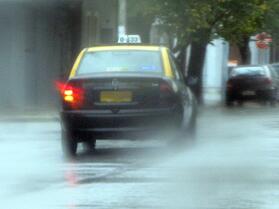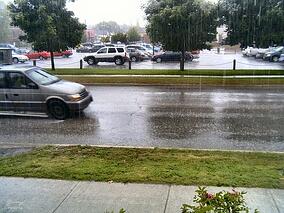- 781-659-2262
 Massachusetts is one of many places subject to a very specific weather phenomenon. During this certain type of weather, the sun often hides behind clouds, strong winds blow, and the air might become a tad bit chillier. Most incredibly, water falls from the sky in sheets!
Massachusetts is one of many places subject to a very specific weather phenomenon. During this certain type of weather, the sun often hides behind clouds, strong winds blow, and the air might become a tad bit chillier. Most incredibly, water falls from the sky in sheets!
This, my friends, is called rain.
When rains fall from the sky, it hits everything. It hits you, your umbrella, your car… and the road.
More often than not, rain won’t be enough to prevent you from going about your daily routine. You drive here, do this, drive there, do that, drive home, and then remember you need to drive somewhere else. So hey, what’s a little water going to do to your overall driving experience?
You may be surprised that water can do a lot, and the streets don’t even have to be flooded. The thinnest layer of water on the road can cause your vehicle to hydroplane.
Hydroplaning is what happens when a layer of water separates your vehicle’s tires from the road. While the depth of the water does influence whether your vehicle will hydroplane or not, there are many other factors to consider.
 First of all, your tires. Tires with low traction are not going to be able to drive through water as easily as tires with higher traction. Traction is determined by the treads in the tires as well as the width of the tires. Keep in mind that worn tires are going to have less tread depth due to greater use on the road. Also, the inflation of the tires and the air pressure will affect the vehicle’s likelihood to hydroplane as well. If you have a tire that is not fully inflated, it is more likely to hydroplane even at lower speeds.
First of all, your tires. Tires with low traction are not going to be able to drive through water as easily as tires with higher traction. Traction is determined by the treads in the tires as well as the width of the tires. Keep in mind that worn tires are going to have less tread depth due to greater use on the road. Also, the inflation of the tires and the air pressure will affect the vehicle’s likelihood to hydroplane as well. If you have a tire that is not fully inflated, it is more likely to hydroplane even at lower speeds.
The speed at which you are driving will also affect your probability of hydroplaning. The unwritten rule is to drive about 2/3 of the posted speed limit sign. For example, if the speed limit is 45 mph, it is recommended that you drive at 30 mph during hazardous weather conditions, such as a heavy rainstorm.
Fun fact: In Massachusetts, you can get a ticket for driving 40 mph on the highway if the limit is 50 mph if you are driving during a heavy rainstorm. Don’t believe me? It says so at the bottom of page 80 in the Driver’s Manual (link can be found here).
To prevent hydroplaning, you should mostly use common sense. Drive slowly, especially in flooded areas. If cars in front of you create large splashes as they drive ahead, be extra cautious around those areas with greater volumes of water.
However, even with all the precautions that can be taken- cars WILL hydroplane under specific conditions.
So, what do you do if your car happens to hydroplane?
KEEP YOUR FEET OFF THE BRAKES. Braking can cause skids. Same goes with turning, DO NOT MAKE ANY SUDDEN TURNS. You want your car to continue on its destined trajectory; don’t try to mess it up.
Hydroplaning is serious. When your car hydroplanes, you have no control. You can’t stop, you can’t go- you literally just go wherever the car takes you… that place could be into another car, into a ditch, into a building… you get the picture.
Risk management is our business, and we believe that prevention is the best solution. In case you hydroplane, remember: DO NOT PANIC. If you have any other questions, do not hesitate to contact us. Learn more about auto insurance here.
 |
We are local insurance experts serving the South Shore for over 70 years.
Click below to get a free quote for your personal or business insurance.